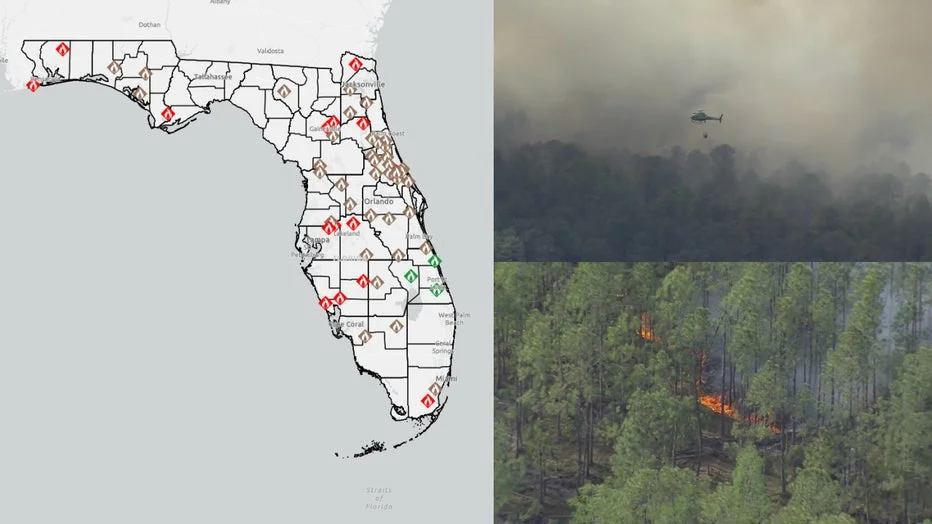
Is Central Florida on the Brink of a Fire Disaster?
As warm weather sweeps across Central Florida, concerns over wildfires are escalating. With recent reports confirming over 1,300 wildfires have burned more than 57,000 acres this year, authorities and residents are on high alert. The question remains: Are we prepared for what could be a devastating fire season?
One of the most significant incidents in recent memory is the ongoing 270-acre wildfire in Volusia County, known as the Powerline Fire. Initially ignited by human activity, this fire has raised eyebrows due to its rapid spread and the immediate dangers it posed to nearby homes. Fortunately, as of April 16, 2025, the Florida Forest Service reported the fire is 95% contained.

In the neighboring Melbourne area, residents faced a similar scare when a brush fire erupted, swiftly engulfing over 30 acres. Local citizen Dharasena Odom recounted her frantic attempts to protect her home: "I dropped the hose, ran in and grabbed both the cats, threw them in the car, and backed out," she said, illustrating the urgent threat posed by these wildfires.
Compounding the problem are ongoing drought conditions paired with high winds, creating what meteorologists describe as a "perfect storm" for fire outbreaks. According to the National Weather Service, sustained winds of 10 to 15 mph are forecasted, alongside humidity levels dropping to alarming lows of 20% to 30%. As conditions worsen, officials have imposed several burn bans across counties such as Volusia, Orange, Lake, and Polk, highlighting the gravity of the current fire risk.
The Florida Forest Service cautions that nearly 80% of wildfires are human-caused. Simple actions—like failing to extinguish campfires or tossing a cigarette improperly—can lead to catastrophic consequences. This emphasizes the importance of fire safety tips, including keeping a clean and green 30-foot defensible space around homes and staying vigilant about local fire conditions.
As families assess their risks and preparations are made for possible evacuations, the community must also remain watchful of any updates regarding burn bans and weather changes. With the potential for rainy weather next week, residents hope for a shift that could provide much-needed relief. Until then, caution remains paramount.
In light of these alarming wildfire trends, what measures are you taking to protect your home? Are local officials doing enough to safeguard communities? We encourage readers to share their thoughts and experiences in the comments below.